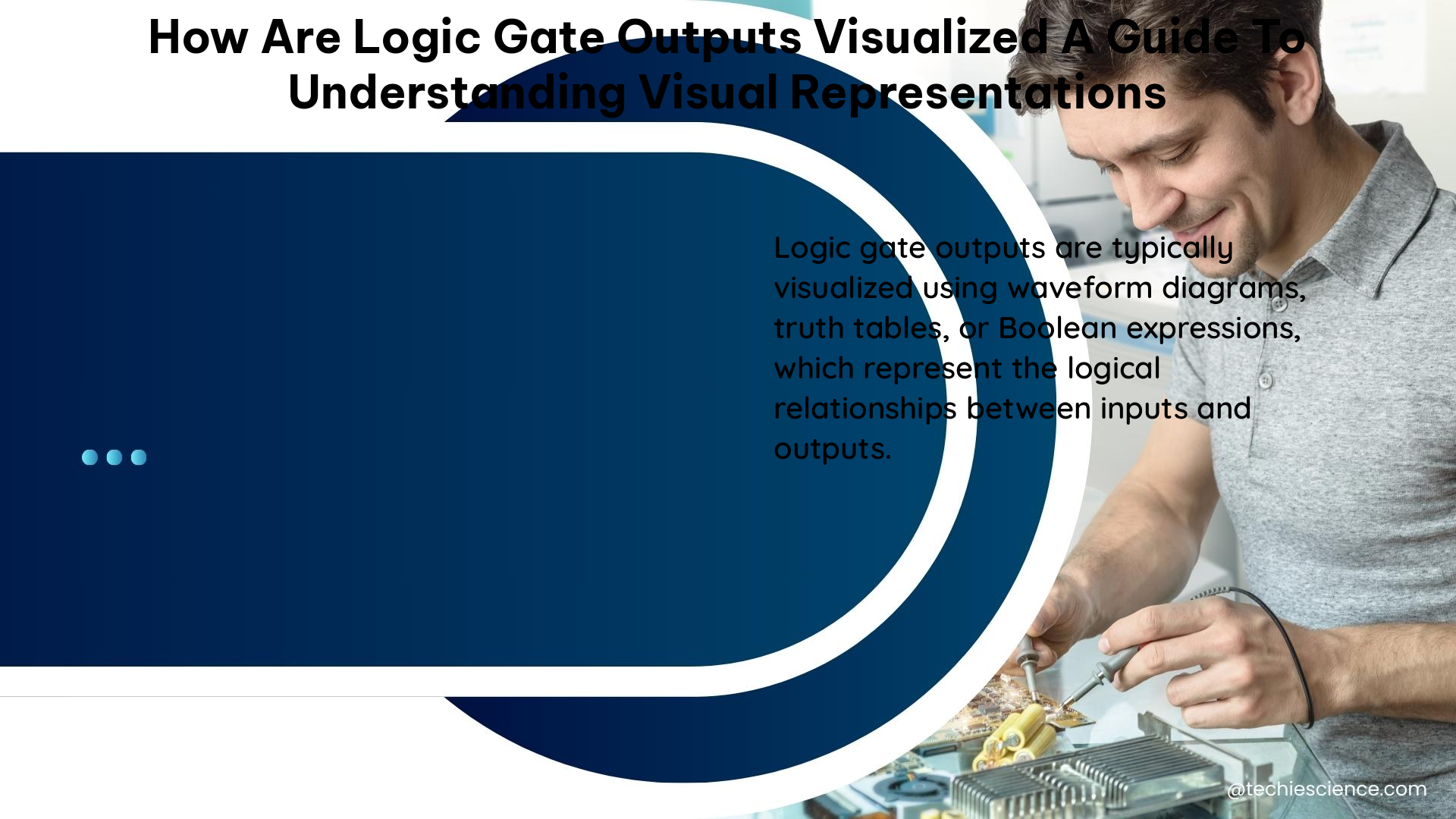As electronics enthusiasts and students, understanding the visual representations of logic gate outputs is crucial for comprehending the behavior of digital circuits. This comprehensive guide delves into the intricacies of truth tables, timing diagrams, and waveforms, providing a detailed exploration of these essential tools for visualizing logic gate operations.
Truth Tables: Mapping Input-Output Relationships
Truth tables are a fundamental tool for visualizing the output of logic gates. These two-dimensional tables systematically display the relationship between the input combinations and the corresponding output values. Each row in a truth table represents a unique set of input conditions, and the corresponding output value is recorded in the adjacent column.
For example, a 2-input AND gate has a truth table with four rows, one for each possible combination of inputs (00, 01, 10, 11), and a single column for the output. The output of the AND gate is 1 only when both inputs are 1, and 0 otherwise. By examining the truth table, you can quickly determine the logic operation performed by the gate and the expected output for any given input scenario.
Truth tables are not limited to simple gates; they can also be used to represent the behavior of more complex digital circuits, such as adders, multiplexers, and decoders. These tables provide a concise and systematic way to visualize the input-output relationships, making them an invaluable tool for circuit analysis and design.
Timing Diagrams: Visualizing Signal Transitions

Timing diagrams are graphical representations that illustrate the behavior of logic gates over time. These diagrams plot the voltage levels (high or low) of the input and output signals on the vertical axis, while the horizontal axis represents the passage of time.
By analyzing a timing diagram, you can observe the temporal relationships between the input and output signals of a logic gate. This includes the propagation delay, which is the time it takes for the output to respond to changes in the input, as well as the rise and fall times of the signals.
Timing diagrams can also be used to visualize the behavior of more complex digital circuits, such as sequential logic, where the output depends not only on the current inputs but also on the previous state of the circuit.
To determine the proper output waveform from a logic gate using a timing diagram, you can divide the input diagrams into time segments where the inputs are constant and then determine the state of the output. This process involves identifying the “don’t care” conditions, where the output does not depend on the specific state of an input.
Waveforms: Oscilloscope Displays of Signal Variations
Waveforms are visual representations of electrical signals that change over time. These waveforms are typically displayed on an oscilloscope, a device that measures and plots the voltage of a signal as a function of time.
Waveforms can be used to visualize the output of a logic gate, as well as the inputs and outputs of other digital circuits. By observing the waveforms, you can gain insights into the timing, amplitude, and frequency characteristics of the signals, which are crucial for understanding the behavior of the circuit.
For example, the output waveform of an OR gate will be high (logic 1) whenever any of the input signals are high, and low (logic 0) only when all the input signals are low. The waveform can be used to verify the correct operation of the OR gate and to identify any potential timing or signal integrity issues.
Waveforms can also be used in conjunction with other visualization tools, such as timing diagrams, to provide a more comprehensive understanding of the circuit’s behavior.
Practical Applications and Considerations
The visual representations of logic gate outputs, including truth tables, timing diagrams, and waveforms, have numerous practical applications in the field of electronics and digital circuit design.
Circuit Analysis and Troubleshooting
These visualization tools are invaluable for analyzing the behavior of digital circuits, identifying potential issues, and troubleshooting problems. By examining the input-output relationships, timing characteristics, and signal waveforms, you can quickly pinpoint the source of malfunctions and devise effective solutions.
Design and Verification
During the design process, these visual representations help engineers validate the functionality of their circuits, ensuring that they meet the desired specifications. They can be used to simulate and test the circuit’s behavior, allowing for early detection and resolution of design flaws.
Education and Training
In the context of electronics education, truth tables, timing diagrams, and waveforms are essential tools for teaching the principles of digital logic and circuit design. They provide students with a clear and intuitive way to understand the behavior of logic gates and the operation of more complex digital systems.
Standardization and Communication
The use of these visual representations also facilitates communication and collaboration among electronics professionals. By adhering to standardized conventions and practices, engineers can effectively share their designs, troubleshoot issues, and exchange technical information with their peers.
Conclusion
In the realm of digital electronics, the visual representations of logic gate outputs, including truth tables, timing diagrams, and waveforms, are indispensable tools for understanding and analyzing the behavior of digital circuits. By mastering these techniques, electronics students and professionals can gain a deeper comprehension of the underlying principles, enhance their design and troubleshooting capabilities, and effectively communicate their ideas within the industry.
Reference:
- Basic Logic Gates – https://grace.bluegrass.kctcs.edu/~kdunn0001/files/3_Basic_Logic_Gates/3_Basic_Logic_Gates_print.html
- Logic Gate Diagrams – https://www.vaia.com/en-us/explanations/computer-science/algorithms-in-computer-science/logic-gate-diagrams/
- Logic Gate Simulator – https://academo.org/demos/logic-gate-simulator/

The lambdageeks.com Core SME Team is a group of experienced subject matter experts from diverse scientific and technical fields including Physics, Chemistry, Technology,Electronics & Electrical Engineering, Automotive, Mechanical Engineering. Our team collaborates to create high-quality, well-researched articles on a wide range of science and technology topics for the lambdageeks.com website.
All Our Senior SME are having more than 7 Years of experience in the respective fields . They are either Working Industry Professionals or assocaited With different Universities. Refer Our Authors Page to get to know About our Core SMEs.